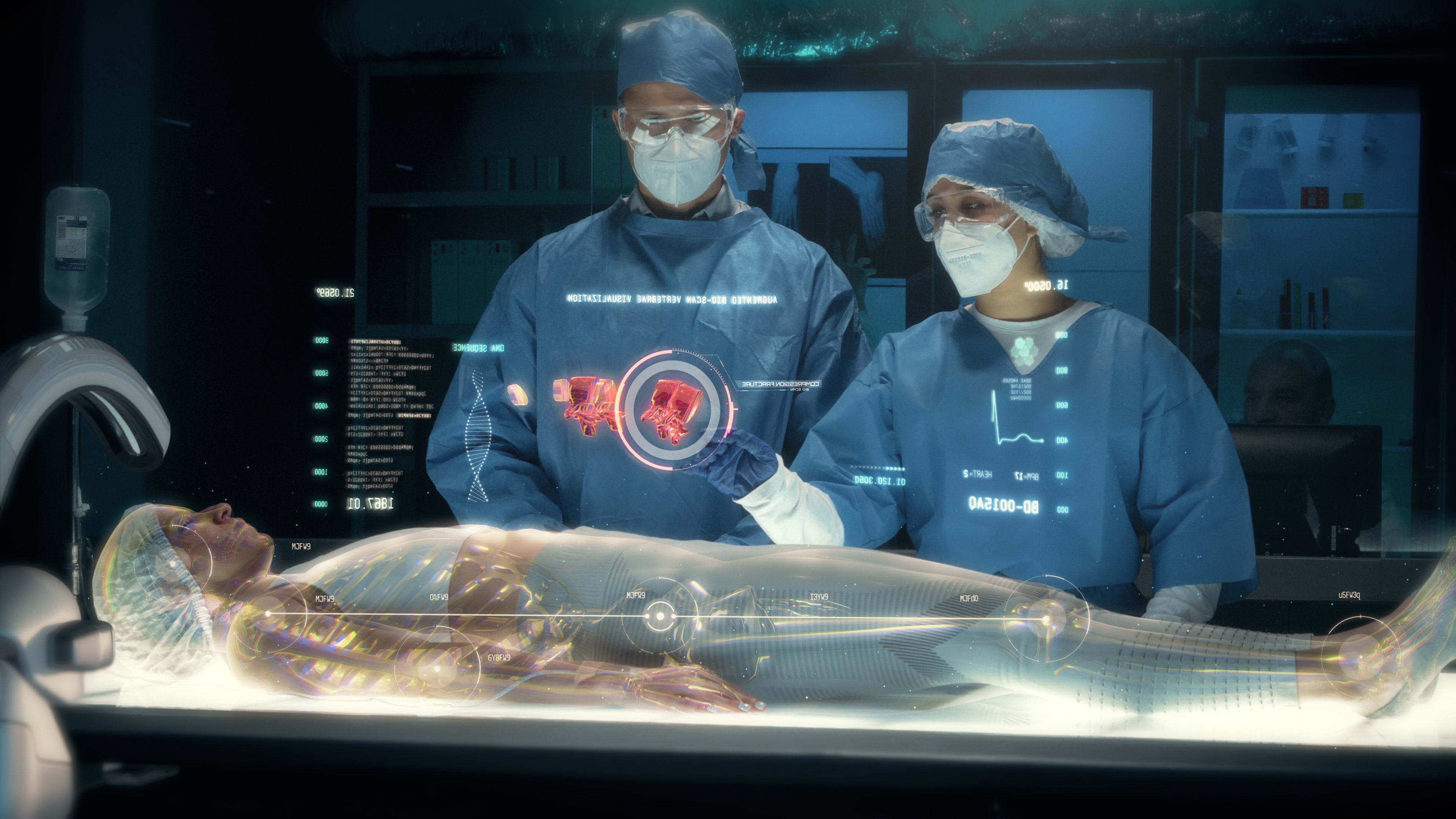The populations around the world are aging and have increasingly complex health needs. As a result of recent medical advancements, the US life expectancy as of 2022 is 79.05 and is rising steadily at a rate of 0.08% annually. In the coming decade, more individuals are expected to live longer lives. Now, with more patients, pathologists would have to go over more information on each patient.

Even though much of their work is repetitive, most radiologists and pathologists are overworking because there is a high demand for what they do, and there is a global shortage of qualified resources, especially in developing countries. In a nutshell, these supporting healthcare departments are facing major challenges, such as:
1. Lack of skilled pathologists
2. Inaccurate or lack of information
3. Delayed turnaround time.
AI in Radiology and Pathology
The application of artificial intelligence (AI) in medical imaging, including but not limited to image processing and interpretation, is one of the most promising areas of healthcare innovation.
1) Faster results: It is obvious that by leveraging artificial intelligence in medical imaging, physicians can identify and escalate conditions much faster. In a recent study, machine learning algorithms were found to be potentially faster and more accurate than 11 pathologists in a simulated setting.
2) Precision: Physicians can use precision medicine to provide a personalized treatment approach that specifically targets the illness in a short period of time.
Tulane University researchers discovered that AI could detect and diagnose colorectal cancer as well as or even better than pathologists by analyzing tissue scans. To improve precision, medicine AI can be used in medical imaging. For example, according to Nature Reviews Clinical Oncology which states that in comparison to the opinions of the first or sole radiologists, the AI system led to an absolute reduction in the rates of false-positive and false-negative detection of biopsy-confirmed breast cancers of 1.2% and 2.7% in the UK test set and 5.7% and 9.4% in the US dataset, respectively.
3) Eliminates subjectivity: Pathology, as it is currently practised, is very subjective. Only about 60% of the time would two highly skilled pathologists evaluate the same slide. This approach eliminates subjectivity in favor of sophisticated, quantitative measurements that will improve patient outcomes.
Physicians can use precision medicine to provide a personalized treatment approach that specifically targets the illness in a short period of time.
Challenges of AI in Radiology and Pathology
We've seen how artificial intelligence can help with medical imaging, but now we'll look at the challenges of artificial intelligence in medical imaging.
- Privacy: Radiological data sharing is required among multiple institutions to minimize healthcare disparities and to have complete and diverse data. Consequently, data security and patient privacy become a major challenge.
- Using innovative ways for data annotation: Manual annotation of radiological images remains a significant bottleneck in the translation of advanced AI algorithms into clinically useful systems. Manual labelling and annotation processes in radiology AI systems are typically expensive and time-consuming. As a result, developing efficient, automated labelling and annotation methods to generate high-quality training and testing data for radiology AI research and application become critical.
- Hardware limitations: Large image file sizes necessitate a significant amount of storage space and backup capability in both on-premises and cloud environments. Furthermore, deep machine learning solutions, when applied to pathology image analysis, rely heavily on graphics processing units. Only by developing and evolving all the related elements in a network into a robust system can we increase computing capacity and reduce turn-around time.
- Standardization and normalization: Variations in brightness, intensity disparity, average color, and boundary intensity settings during scanning can all result in unreliable raw data and inaccurate results. A single noise in big data can cause misclassification and change the slide prediction, resulting in many false positives or negatives. Therefore, the protocols and systemic quality controls must be standardized to reduce system and random errors caused by different instruments.
- Lack of high-quality datasets: Given that the amount of data used to train the Machine Learning system determines the accuracy of the prediction or judgement of the output, a large amount of high-quality data is required to train the model.
Modern problems require modern solutions
Various companies have created platforms to address the above challenges of AI in radiology. Healthcare organizations have successfully introduced software solutions that enable developers to create automated healthcare workflows by building and deploying medical imaging applications.
They have also demonstrated significant potential to provide value to organizations looking to leverage AI to enable large-scale deep learning for medical imaging. This includes imaging workflow, 3D images processing pipeline using shared memory, and improving clinical workflows across cardiology specialities and modalities to maximize efficiency.
Here are a few examples:
Nvidia: It is an American multinational technology company that has introduced Clara for Medical imaging, which accelerates a typical imaging workflow that begins with data labelling. The solution then moves on to creating AI models, developing applications that include one or more AI models, and finally deploying them at a single institution or across multiple institutions. NVIDIA AI-Assisted Annotation (AIAA) with Deep Grow enables fast labelling of CT and MRI data with a few clicks on an area of interest and in a few slices. AIAA accelerates image labelling, which can be a time-consuming and tedious task prone to human error.
GE Healthcare: SIGNA Hero, SIGNA Artist Evo, Revolution Apex platform, Allia Platform, and AMX Navigate are some of the new AI-powered, automated, and data-driven solutions developed by GE Healthcare to help encourage greater diagnostic confidence, ease the burden of care, and improve workflow for healthcare systems globally.
IBM Watson: On every release, IBM Watson collaborates closely with 4ways to improve turnaround times, improve its reporting system, increase service robustness for customers, assist in improving service delivery for customers, support teleradiology partners, and its internal IT support team with a more scalable solution.
Philips Healthcare: The company has created a solid platform that focuses on patient management, image acquisition, image interpretation, and reporting.
In Conclusion
The future looks bright; it appears that the quote has inspired everyone, “Do the best you can until you know better. Then you know better, do better” by Maya Angelou.
Whatever solution one may implement, we know that technologies will come and go, but keeping a beam focus on the value that we are creating allows us to deliver with focused efforts. More importantly, it fosters patient trust and satisfaction because they understand that we are inspired not just by technological capabilities or business imperatives, but by a larger vision of providing patient delight.

